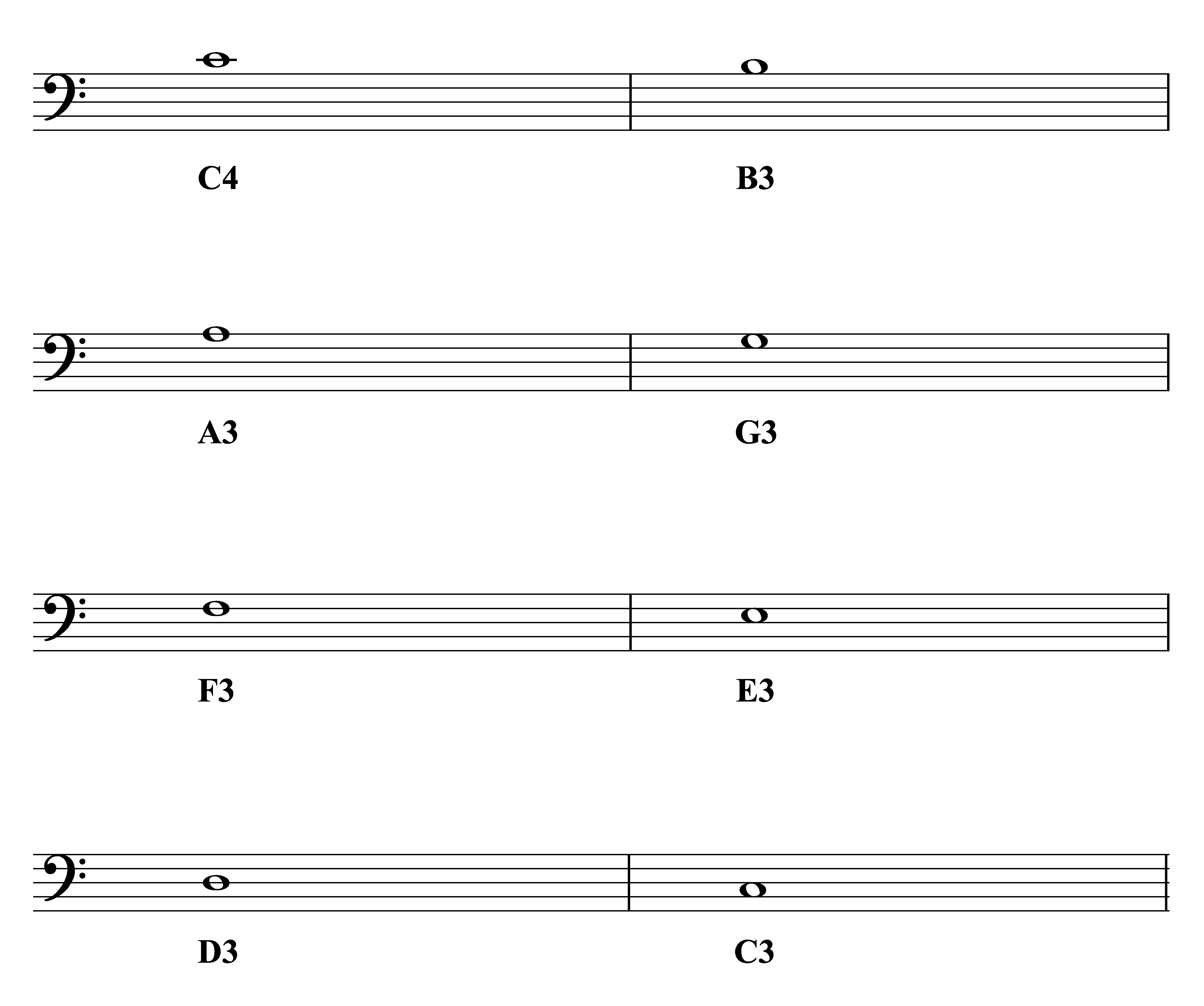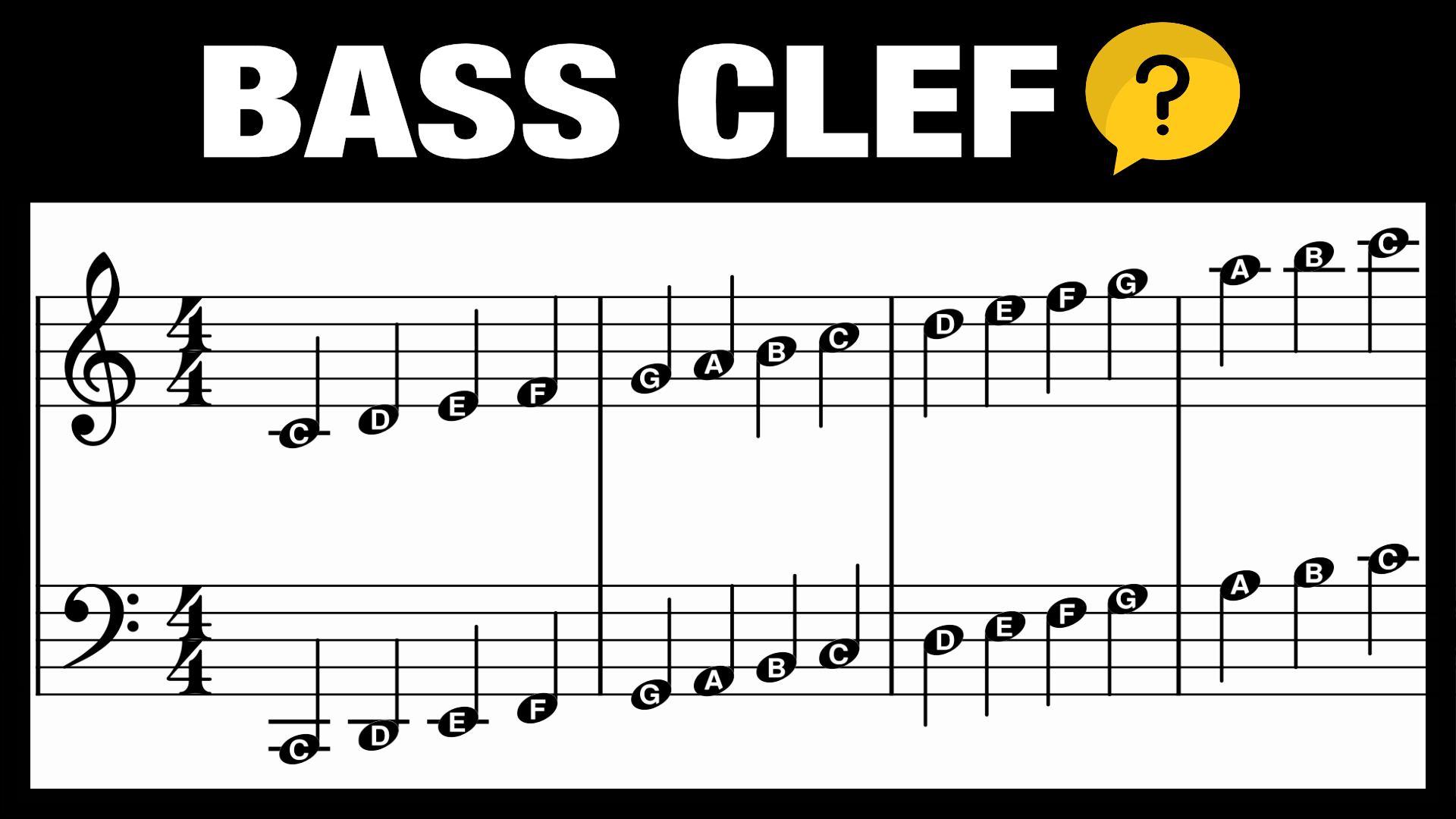
The only F-clef still in use is the bass clef, with the clef placed on the fourth line. Tenor voice parts sound an octave lower and are often written using an octave clef (see below) or a double-treble clef. The treble clef is used for the soprano, mezzo-soprano, alto, contralto and tenor voices. The viola also may use the treble clef for very high notes. cello, double bass, bassoon, and trombone) are written in the tenor clef, but very high pitches may be notated in the treble clef. Most high parts for bass-clef instruments (e.g. The treble clef is also the upper staff of the grand staff used for harp and keyboard instruments.

Euphonium and baritone horn are sometimes treated as transposing instruments, using the treble clef and sounding a major ninth lower, and are sometimes treated as concert-pitch instruments, using bass clef. Instruments that use the treble clef include violin, flute, oboe, cor anglais, all clarinets, all saxophones, horn, trumpet, cornet, vibraphone, xylophone, mandolin, recorder, bagpipe and guitar. The treble clef was historically used to mark a treble, or pre-pubescent, voice part. For this reason, the terms "G-clef" and "treble clef" are often seen as synonymous.

This is the most common clef in use and is generally the first clef learned by music students. The only G-clef still in use is the treble clef, with the G-clef placed on the second line. The C-clef on the topmost line is equivalent to the F-clef on the third line but both options have been used.Įach of these clefs has a different name based on the tessitura for which it is best suited. Thus, there are nine possible distinct clefs, all of which have been used historically: the G-clef on the two bottom lines, the F-clef on the three top lines, and the C-clef on any line. Six of these are redundant because they result in an identical assignment of the notes to the lines (and spaces)-for example, a G-clef on the third line yields the same note placement as a C-clef on the bottom line. With five lines on the staff and three clefs, there are fifteen possibilities for clef placement. Theoretically, any clef may be placed on any line. Two common mnemonics for learning the clef lines are: C-clef defines middle C whereas treble clef and bass clef define the note at the interval of a fifth above middle C and below middle C, respectively. For example, even the low saxophones read in treble clef.Ī symmetry exists surrounding middle C regarding the F-, C- and G-clefs. Transposing instruments can be an exception to this-the same clef is generally used for all instruments in a family, regardless of their sounding pitch. To this end, the G-clef is used for high parts, the C-clef for middle parts, and the F-clef for low parts.

Using different clefs for different instruments and voices allows each part to be written comfortably on a staff with a minimum of ledger lines. The use of different clefs makes it possible to write music for all instruments and voices, regardless of differences in range. A clef may be placed on a space instead of a line, but this is rare.

The C-clef is mostly encountered as alto clef (placing middle C on the third line) or tenor clef (middle C on the fourth line). In modern music notation, the G-clef is most frequently seen as treble clef (placing G 4 on the second line of the staff), and the F-clef as bass clef (placing F 3 on the fourth line). Placing these clefs on a line fixes a reference note to that line-an F-clef fixes the F below middle C, a C-clef fixes middle C, and a G-clef fixes the G above middle C. The three clef symbols used in modern music notation are the G-clef, F-clef, and C-clef. Placing a clef on a staff assigns a particular pitch to one of the five lines, which defines the pitches on the remaining lines and spaces. A clef (from French: clef 'key') is a musical symbol used to indicate which notes are represented by the lines and spaces on a musical staff.


 0 kommentar(er)
0 kommentar(er)
